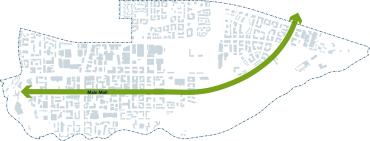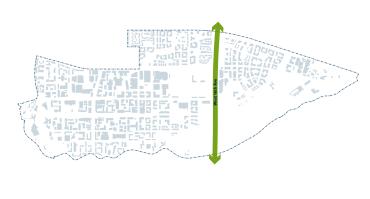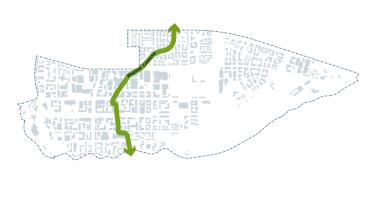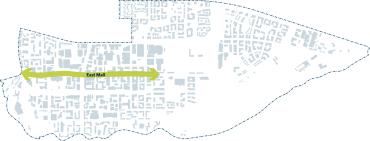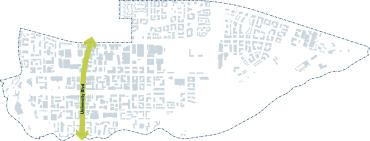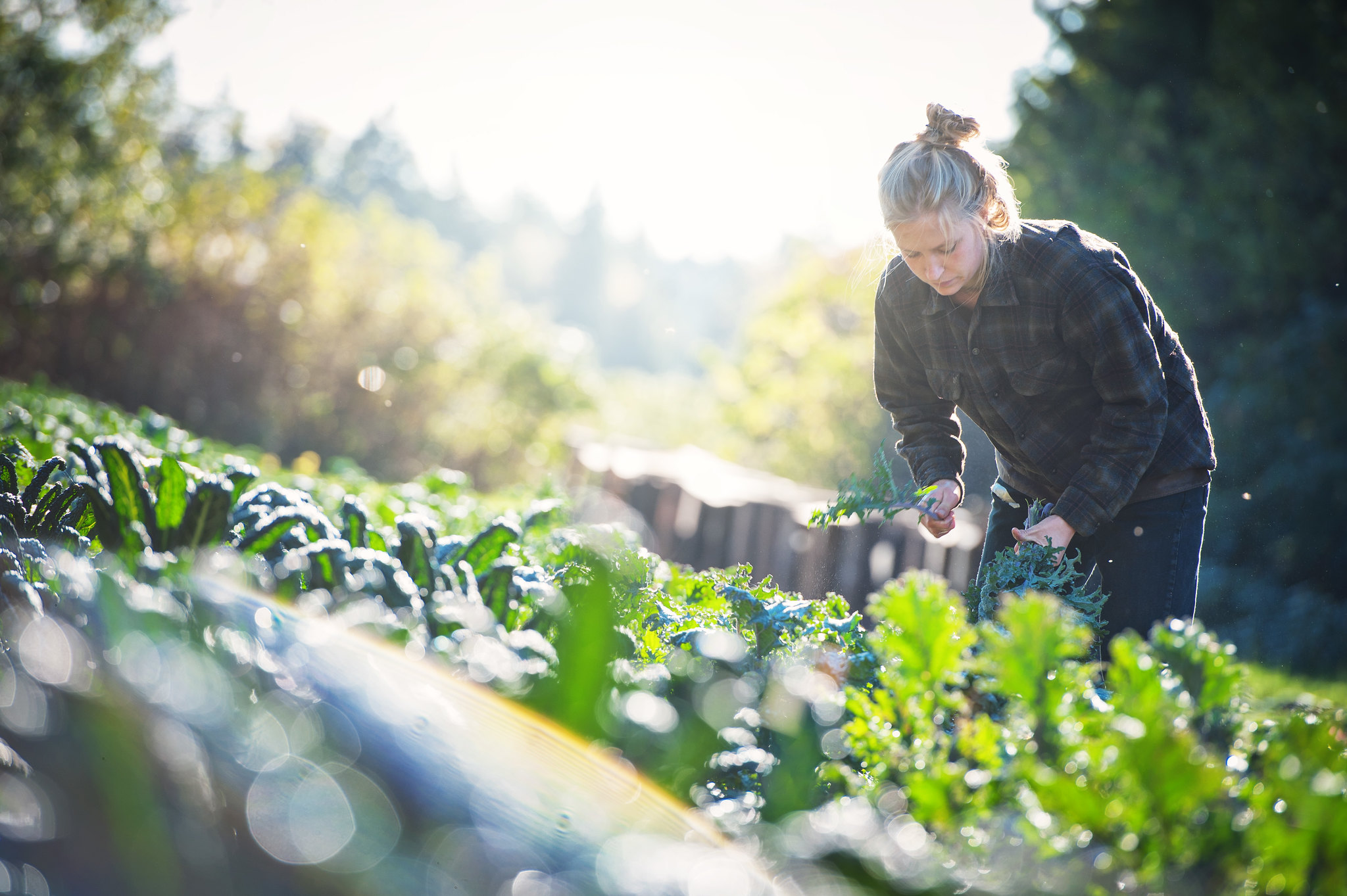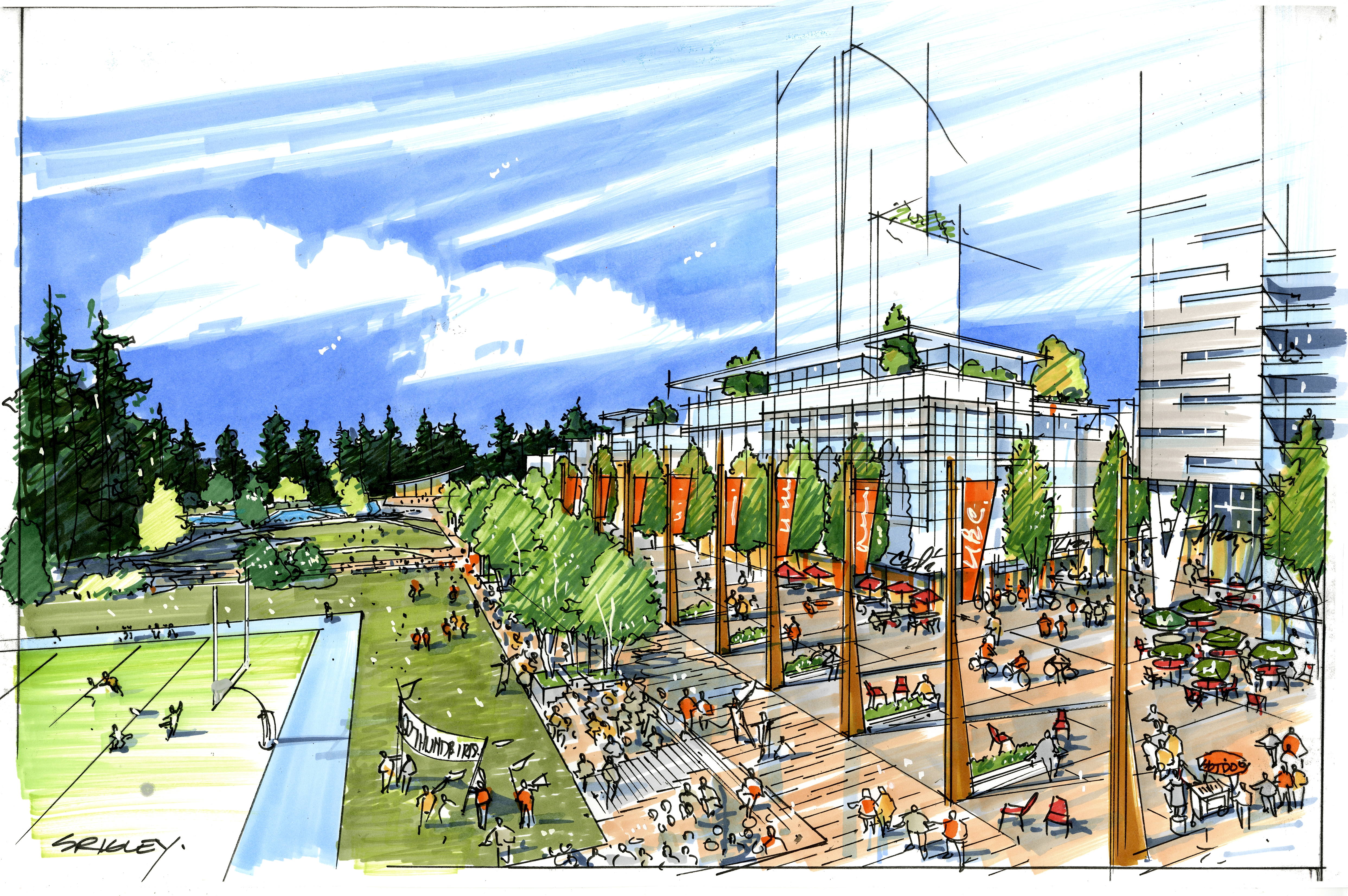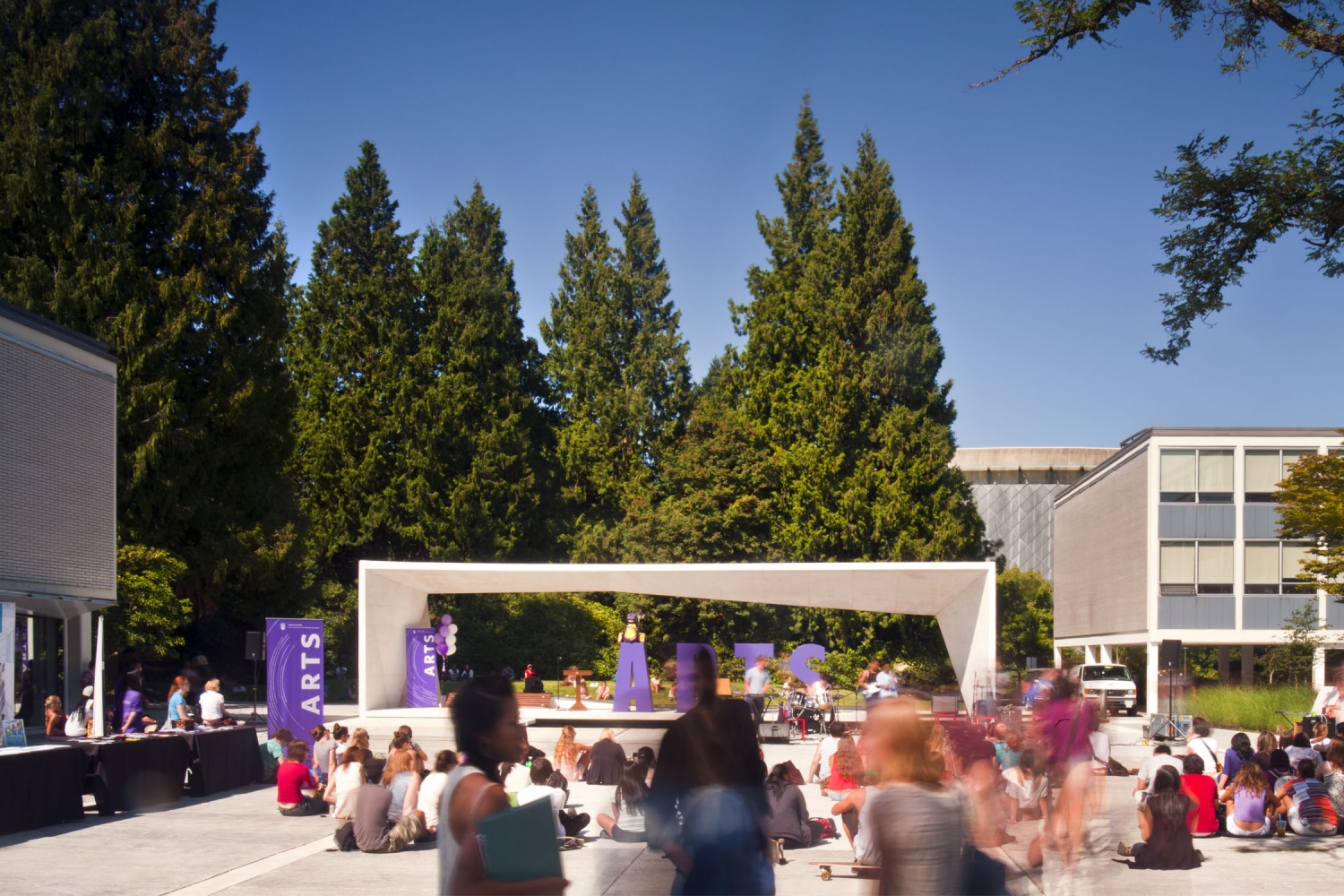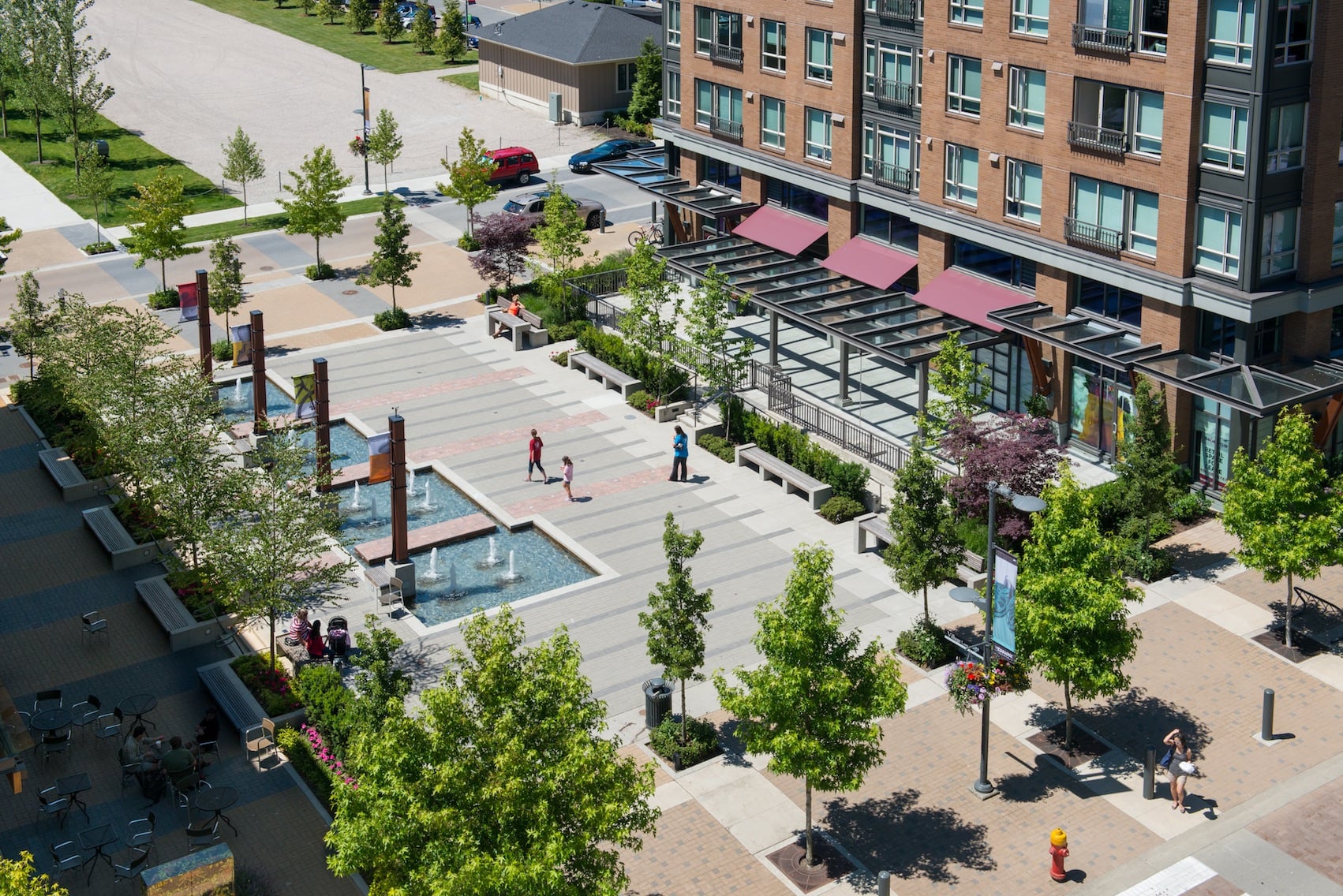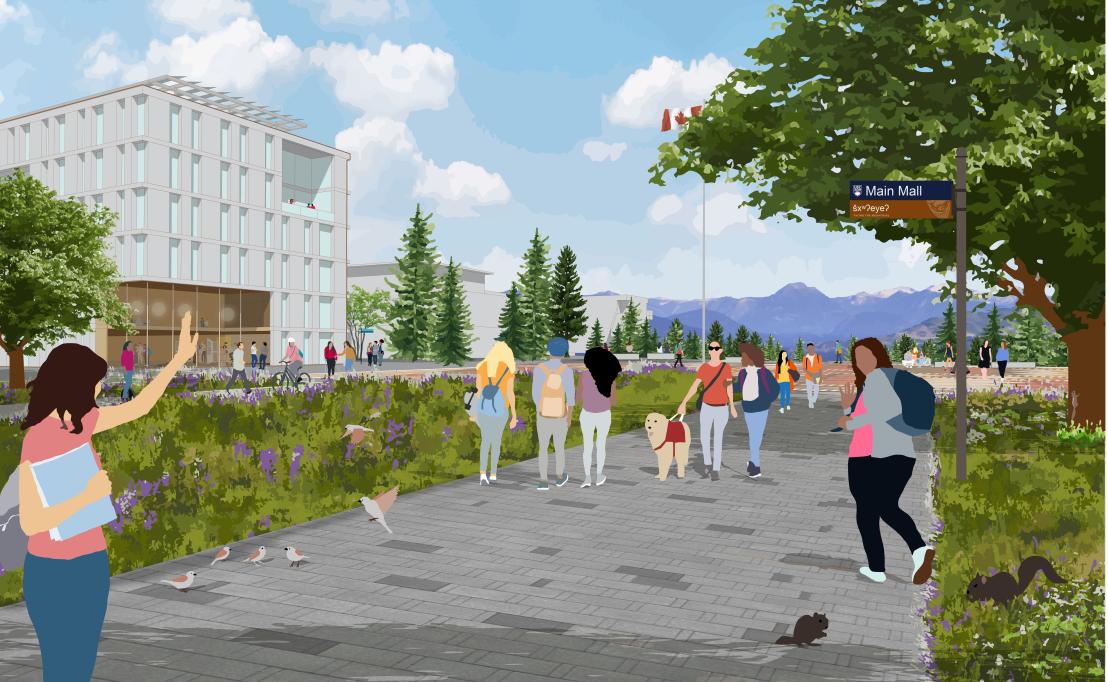
UBC Vancouver in 2050...
Guided by rich natural surroundings and Indigenous knowledge, the campus integrates natural systems and supports increased biodiversity. A network of connected green public spaces, courtyards, corridors, green roofs and places for respite and social connection work alongside academic and neighbourhood buildings. Indigenous plants and other features that embody Musqueam values create a sense of welcome to Musqueam territory. Biodiversity and ecological resilience are supported throughout the campus, including new tree canopy, rain gardens and green corridors for biking, walking and rolling.
Key Strategies
|
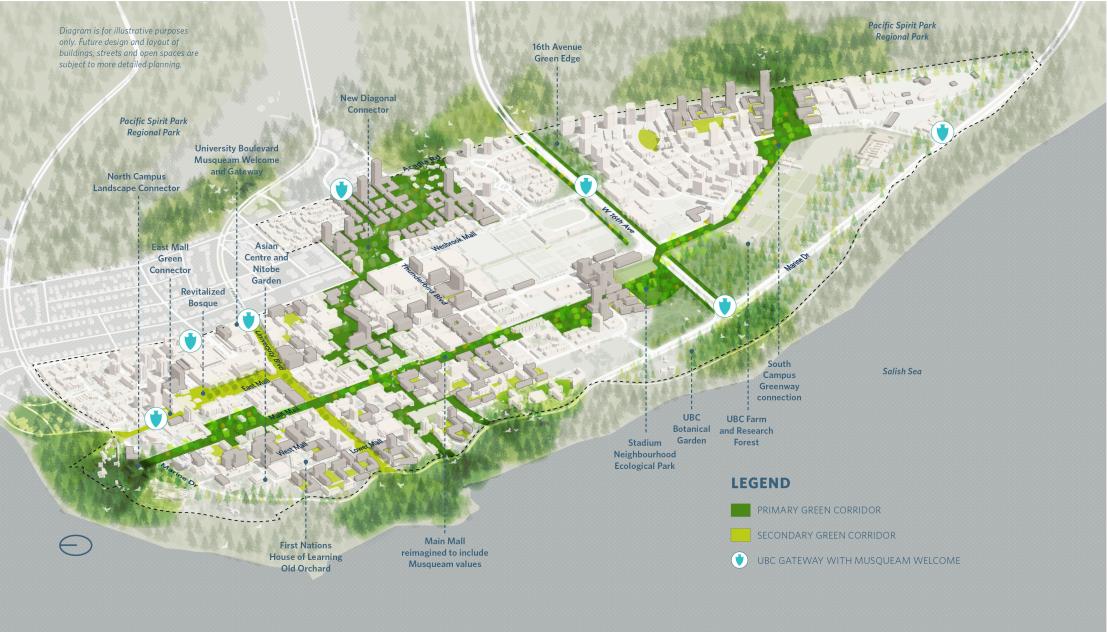
Musqueam Values and Connection to the Land
Situated within Musqueam territory, there is significant historic and cultural importance of this land to Musqueam. More recently, deeper engagement with Musqueam and evolving knowledge of Indigenous practices and climate adaptive planting are shaping novel approaches to creating and enhancing the ecological, educational and social role landscapes play on the campus.
The entire Point Grey peninsula, including the UBC Vancouver campus, is culturally and ecologically important for Musqueam people. Musqueam and UBC will continue to work together to identify areas having significant value, enhance these places and Musqueam access to them, and will work together with Metro Vancouver to find ways to safeguard and enhance the health of the Pacific Spirit Regional Park ecology.
Peninsula Ecology and Biodiversity
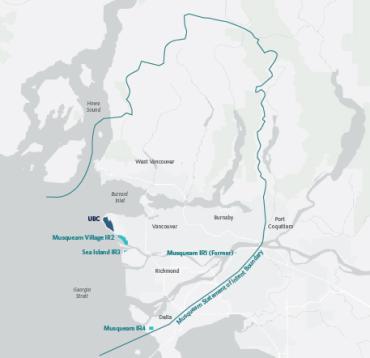
Surrounded by Pacific Spirit Regional Park, UBC is part of a broader ecological and open space system within the region. As the campus grows and evolves, UBC’s open spaces will play a critical role in achieving ecological connectivity, supporting healthy and resilient natural systems and serving the needs of a growing population.
Within the UBC campus there are many green areas valued by UBC and Musqueam communities, but the vast majority are manicured landscapes that currently provide low ecological value (e.g., Main Mall and the Bosque). One notable exception is the UBC Farm research forest. Climate change poses risks for the peninsula’s biodiversity and ecology, including warmer temperatures, longer dry spells, wetter fall and winter seasons, more extreme precipitation, and more frequent and intense extreme weather events, which may alter where plants and animals can thrive.
UBC will work with Musqueam and UBC researchers to identify, protect, enhance and connect green areas on campus with surrounding forests and watercourses. This will elevate some current low-value habitat areas on campus to higher-value habitat and reinforce key ecological connections. The Vision also supports understanding and planning for climate change impacts on indigenous plants and natural assets at UBC Vancouver.
Landscape Corridors
The Vision establishes a system of landscape corridors that will extend the surrounding forest into and throughout the campus. Primary landscape corridors will provide major opportunities for ecological connectivity, rainwater management and movement of wildlife and people. Secondary corridors will connect and revitalize smaller green and open spaces within the campus core.
A Network of Open Spaces
The Vision ensures that everyone on campus will be within easy walking or rolling distance to a network of open spaces that knit the campus together. Varying in size, function and character, these spaces will enhance health and wellbeing, community resiliency and biodiversity, and support new and innovative ways of learning.
